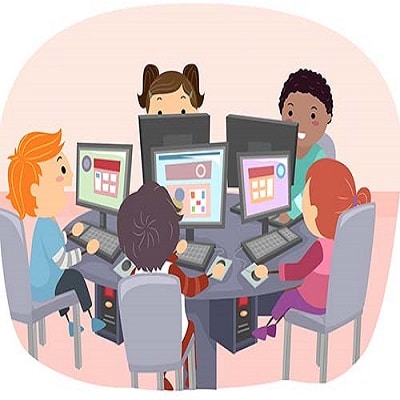Information technology (IT) plays a crucial role in modern society, and its impact on education has been significant. Here are some key points regarding the importance of IT and its influence on education:
Access to Information: Information technology has revolutionized access to information. The internet provides a vast amount of knowledge and resources that can be easily accessed by students and educators. Online libraries, databases, educational websites, and digital textbooks offer a wealth of information that enhances learning opportunities.
Enhanced Learning and Teaching Methods: IT has transformed traditional teaching methods. Digital tools, multimedia presentations, and interactive educational software make learning more engaging and interactive. Online platforms enable distance learning, allowing students to access educational materials and participate in classes remotely. Virtual reality (VR) and augmented reality (AR) technologies offer immersive educational experiences, making complex concepts easier to understand.
Collaboration and Communication: IT facilitates collaboration and communication among students, teachers, and educational institutions. Online discussion forums, video conferencing, and collaborative platforms enable students to work together on projects, share ideas, and receive feedback. Teachers can communicate with students outside of class, provide additional resources, and offer online support.
Personalized Learning: Information technology enables personalized learning experiences. Adaptive learning software and intelligent tutoring systems can tailor educational content to individual students’ needs, pace, and learning styles. This personalized approach helps students grasp concepts more effectively and allows educators to track progress and provide targeted support.
Global Learning Opportunities: IT expands educational horizons beyond traditional boundaries. Students can engage in cross-cultural exchanges, collaborate with peers from different countries, and gain a global perspective. Online courses and Massive Open Online Courses (MOOCs) provide access to education from renowned institutions worldwide, democratizing learning opportunities.
Efficiency and Organization: IT improves administrative tasks in educational institutions. Student information systems, digital grading systems, and online registration streamline administrative processes, saving time and resources. Educational management software facilitates efficient organization and communication within institutions.
Lifelong Learning: Information technology promotes lifelong learning. Online platforms offer continuing education courses, professional development opportunities, and access to a vast array of resources. Individuals can update their skills, learn new subjects, and stay abreast of the latest advancements in their fields.

Digital Literacy: IT equips students with essential digital literacy skills needed in today’s interconnected world. Proficiency in using digital tools, critical evaluation of online information, and responsible use of technology are vital skills for success in education and the workplace.
Overall, information technology has transformed education by providing access to information, enhancing learning experiences, promoting collaboration, and expanding educational opportunities. Embracing IT in education allows for innovation, personalized learning, and preparing students for the digital age.
Information technology plays a crucial role in enhancing interactive learning on English-language blogs. Here are some ways in which information technology can contribute to improving the interactive learning experience through electronic blogs:
Multimedia: Information technology can be used to enhance interactivity by incorporating multimedia elements. Images, animations, videos, and audio can be embedded in the electronic blog to illustrate concepts and make them more engaging and understandable.
Educational Games: Technology can be used to develop interactive educational games that help students apply concepts and solve challenges. These games can be interactive and motivating, encouraging active participation and enjoyable learning.
Discussion Forums: Discussion forums can be created on the electronic blog to encourage interaction among students, allowing them to exchange ideas and opinions. Students can ask questions and discuss the topics at hand, fostering interaction and social learning.
Interactive Tests and Assessments: Information technology can be used to include interactive tests on the electronic blog to assess students’ understanding and proficiency. Immediate results and feedback can be provided, enabling students to review and improve their performance.
Project-Based Learning: The electronic blog can serve as a platform for implementing interactive educational projects. Students can work on applied or research projects and share their results and experiences on the electronic blog, promoting hands-on learning and interaction.
Interactive Responses: Students can provide interactive responses and comments on the content posted on the electronic blog. These responses can be opportunities for exchanging ideas, addressing inquiries, and building discussions and interactions among students and the blogger.
Use of Electronic Educational Resources: Electronic educational resources such as instructional videos, presentations, and supplementary materials can be provided on the electronic blog. These resources offer additional opportunities for interactive learning and concept clarification in innovative ways.
Direct Communication with the Teacher: Students can communicate directly with the teacher through email or an internal messaging system on the electronic blog. They can ask questions, seek assistance, and request guidance, fostering individual interaction and helping students achieve their learning goals.
Information technology plays a vital role in enabling interactive learning on English-language electronic blogs. By blending multimedia, providing interactive tools, enabling communication and collaboration, technology can enhance the learning experience and foster students’ understanding and engagement in the educational process.























